Federal Republic of Germany
| |
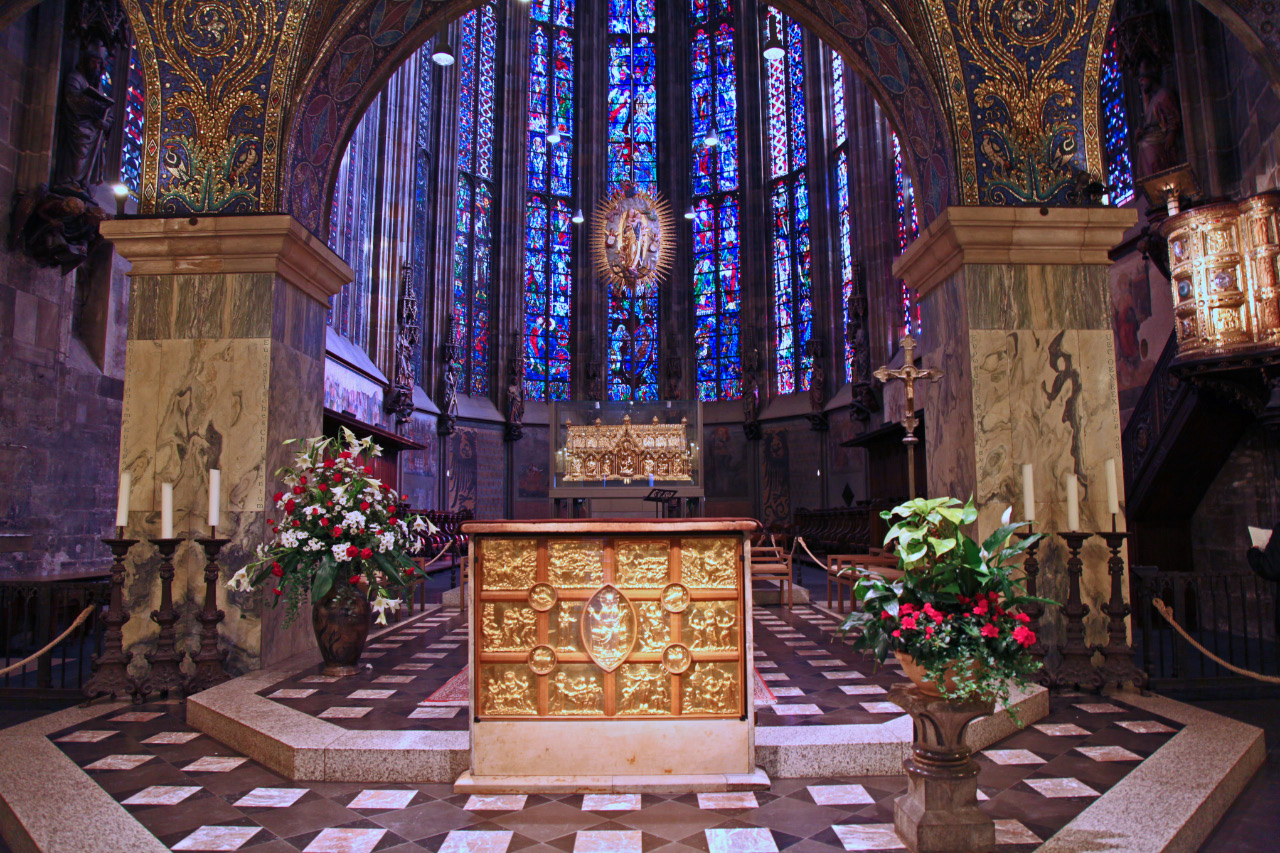 |
|
| |
im Aachener Dom, Altar, Pala d'Oro, Marienschrein, Glashaus
|
|
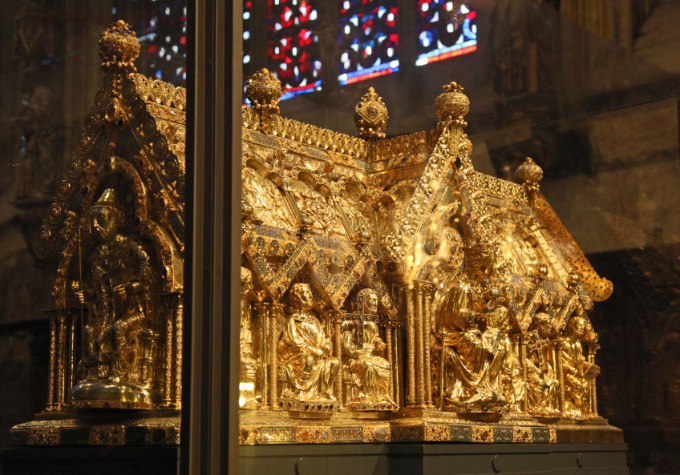 |
|
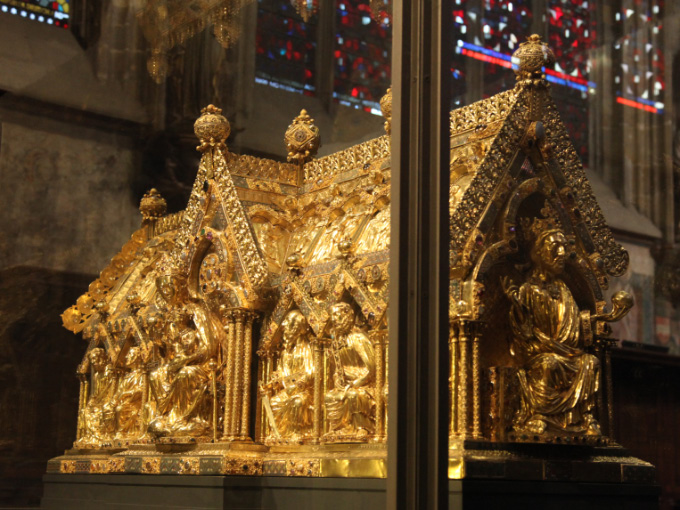 |
Der Marienschrein im Aachener Dom - Reliquienschrein um 1220 vom Kapitel des Aachener Marienstifts in Auftrag gegeben und 1239 vollendet.
The contents of the Shrine of Mary in Aachen Cathedral make this 13th century reliquary, the Cathedral which houses it and the city in which they are located
among the most important and holy pilgrimage sites in Europe and in the World. The four holy contact relics are the nappy of Baby Jesus and His loin cloth;
a dress of the Blessed Theotokos Mary and the decapitation cloth of John the Baptist.
|
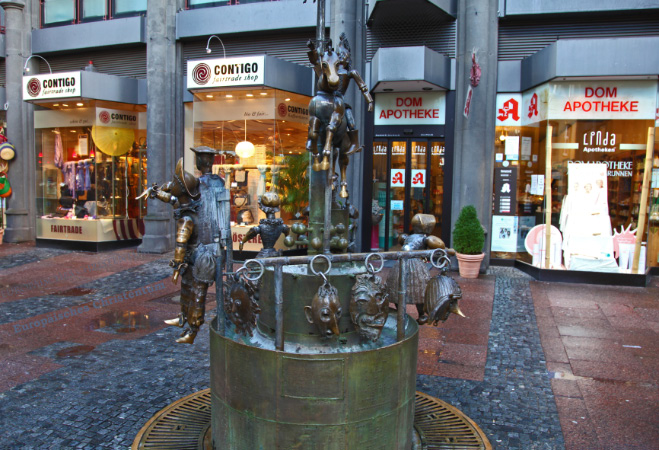 |
|
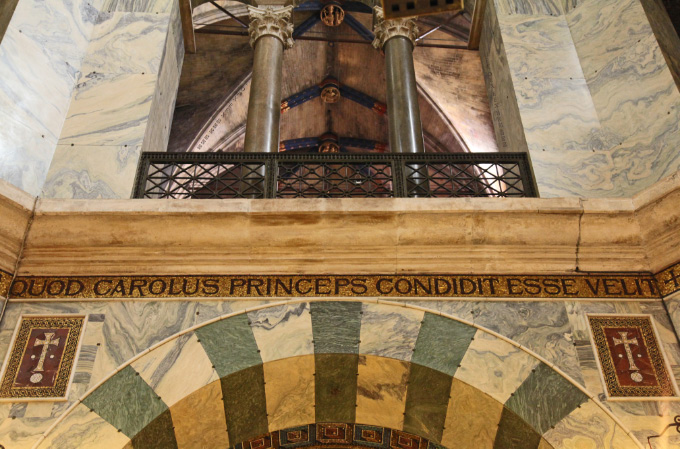 |
... für die Masse der Menschen, die bequemste Gesellschaft in der Geschichte.
... for the mass of men, the most comfortable society in history. |
|
... between the pillars Carolingian, bronze grating-rail cast 1200 years ago in a single piece according to a complicated Roman casting process. |
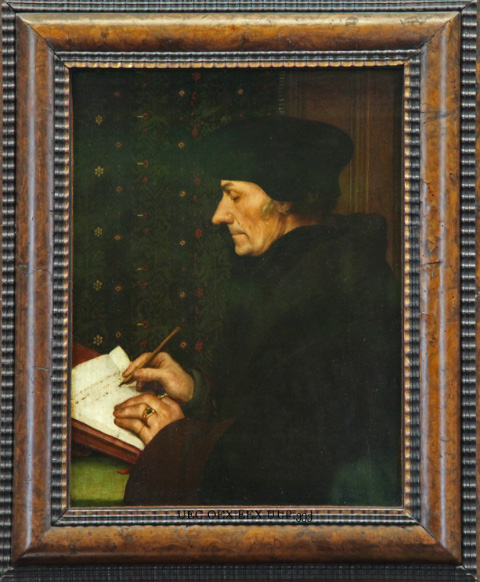
Desiderius Erasmus Roterodamus – Desiderius Erasmus von Rotterdam
(* c. 1466 Rotterdam – 11./12. Juli 1536 Basel †). Er verteidigte Lehre von der Transsubstantiation gegen den Lärm des Protests und der neuen Religion Erfindung. Gemälde im Louvre von Hans Holbein der Jüngere (* c. 1497 Augsburg – London 29 November 1543 †) |
|
|
| |
|
|
| |
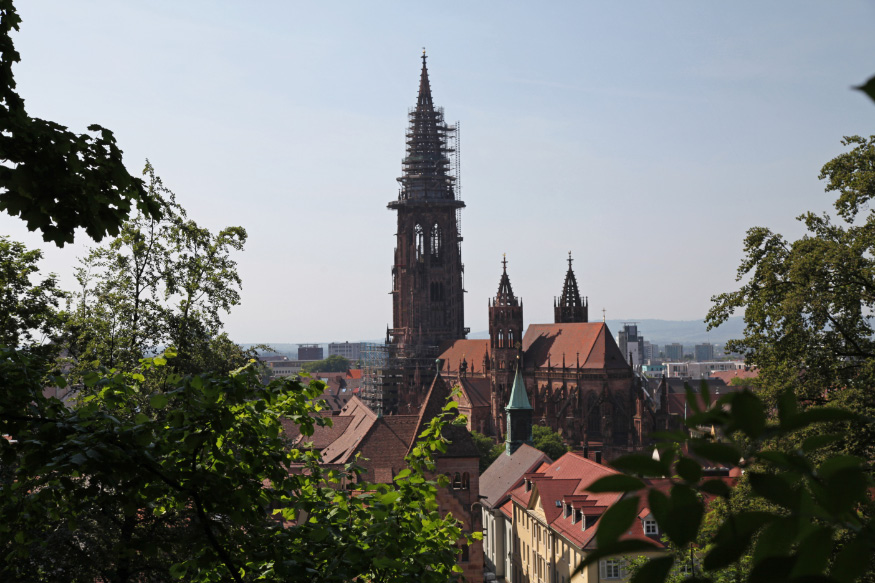 |
|
| |
Münster Unserer Lieben Frau – das Freiburger Münster, von etwa 1200 bis 1513 erbaut – cornerstone laid in 1200 Anno Domini. |
|
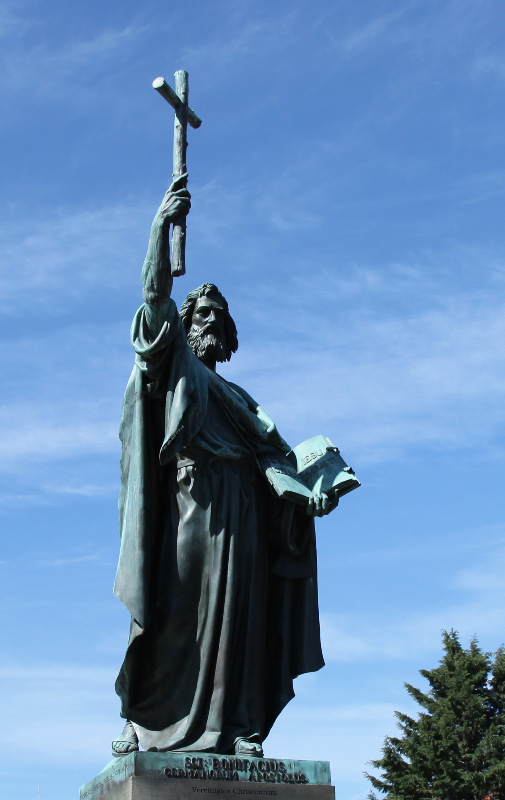 |
|
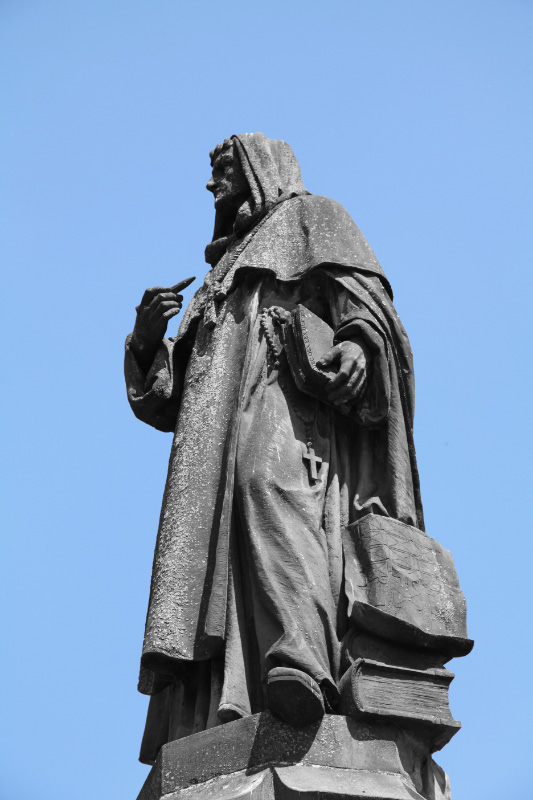 |
| Verbum Domini Manet in Aeternum |
|
Albertus Magnus – Albert der Große (* c. 1200 Herzogtum Baiern – Köln 15 November 1280 †), Saint and Doctor of the Church, Statue on Schwabentorbrücke, Freiburg im Breisgau. |
| Bonifatius – Saint Boniface (* 673 – 754 †) |
|
| Patron Saint of Germania |
|
| |
Konrad Hermann Joseph Adenauer |
|
| |
(* 5 January 1876; von 15 September 1949 bis 16 October 1963 erste Bundeskanzler der Bundesrepublik Deutschland; 19 April 1967 †)
Sculpture outside the Palais Schaumburg in Bonn by Hubertus von Pilgrim incorporating symbolic casted Kölner Dom and Cathédrale Notre-Dame de Reims.
Konrad Adenauer, an Orthodox-Catholic Christian, a founder of the CDU (Christian Democratic Union) Party of Germany and the
Federal Republic of Germany's first Chancellor, was an early visionary leader of European unity on a Christian basis.
He would be horrified by what the CDU has transmogrified into and by the intellectual mediocrity incarnate and civilizational traitor, Angela Merkel, at its head. |
|
| |
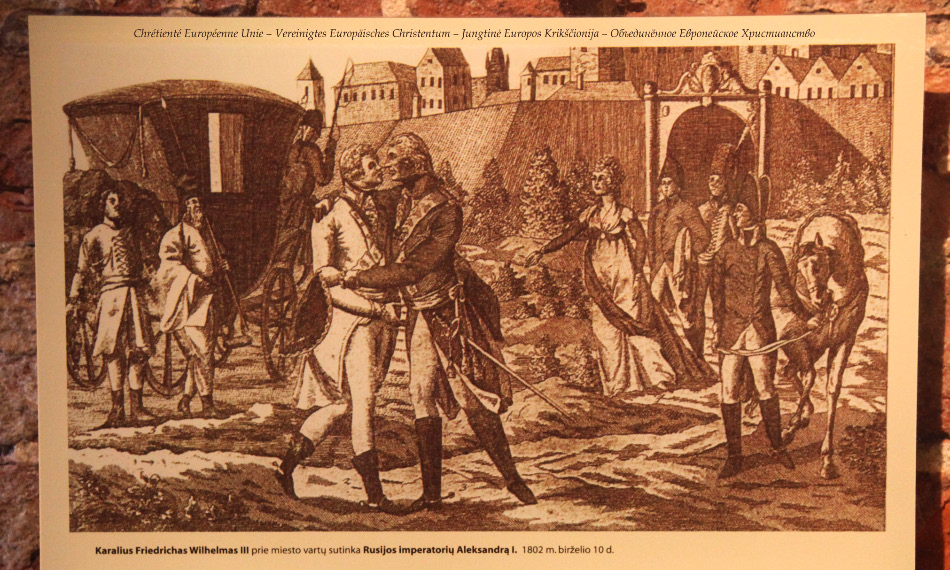 |
|
| |
Better times for German - Russian relations, though so very often we seem to need to find a common enemy, or have enemies find us, like Napolean or the Turks, or now in the XXI century, Muslims and Jews and Homosexuals and Plutocrats. Here in a castle museum in Klaipeda in Lithuania, a print memorializing a meeting of brother sovereigns in European Christendom, König und Kaiser Friedrich Wilhelm III (3 August 1770; reigned from 16 November 1797 to 7 June 1840) and Tsar-Emperor Alexander I – Александр I Павлович (23 [O.S. 12] December 1777; reigned from 23 March 1801, from the date his father, Pavel, was murdered, to 1 December [O.S. 19 November] 1825, when he died or, according to another version, got tired of kinging and ducked into a monastery.) Alexander's younger brother and successor, Tsar-Emperor Nicholas I – Николай I Павлович (6 July [O.S. 25 June] 1796; reigned from 1 December 1825 to 2 March [O.S. 18 February] 1855) took as wife the first daughter of Kaiser Friedrich Wilhelm III, Prinzessin Charlotte von Preußen (1798–1860), who thereafter was restyled Императрица Александра Фёдоровна – Empress Alexandra Fyodorovna of Russia, thereafter mother of Emperor and Tsar-Liberator Alexander II. Indeed, nineteen-years-younger, little brother Nikolai was taking after older brother Alexander in this regard also. Alexander, who took for beloved bride German Luise Marie Auguste Prinzessin von Baden (* 1779 to 16 May [O.S. 4 May] 1826 †), restyled with marriage Императрица Елизавета Алексеевна – Empress Elizabeth Alexeievna of Russia. Two more unions piling on more proof of the absurdity which coupled the evil of internecine, fratricidal war between Germany-Austria and Russia-Ukraine. This meeting of Frederick William and Alexander in Klaipėda, when it was Memel of Prussia, on 10 June 1802 was under rather more auspicious circumstances for Frederick than a later visit to Memel in 1806, fleeing Napoleon's Grande Armée. |
|
| |
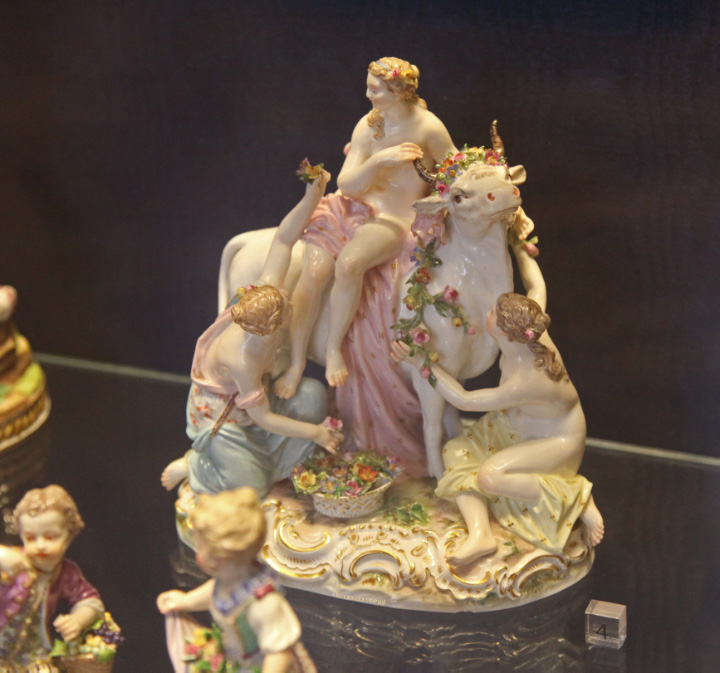 |
|
| |
Located in the Latvijas Arhitektūras muzejs in Riga in Latvia, this porcelain rendition from c. 1871 of Eiropas Nolaupīšana – Raub der Europa – the Abduction of Europa is after the model (1759) of Johann Joachim Kändler (1706 – 1775), perhaps the most important modelleur of the most important porcelain manufacturer, that of Meissen. |
|
| |
|
Deutschland - Vereinigtes Europäisches Christentum |
| |
|
Germany - United European Christendom |
|